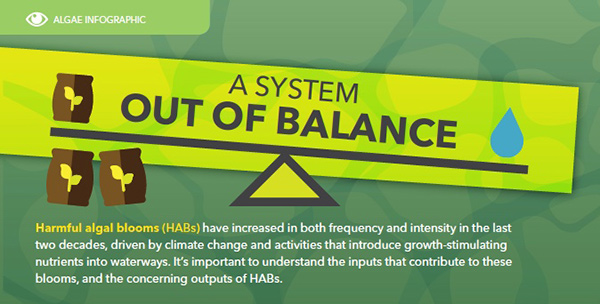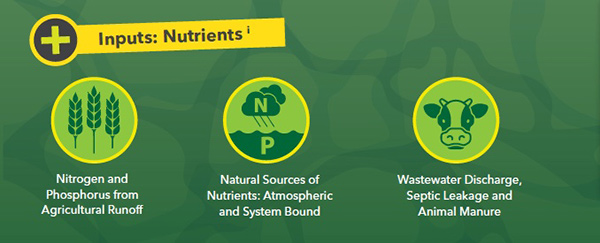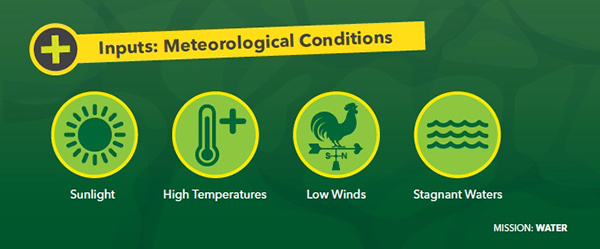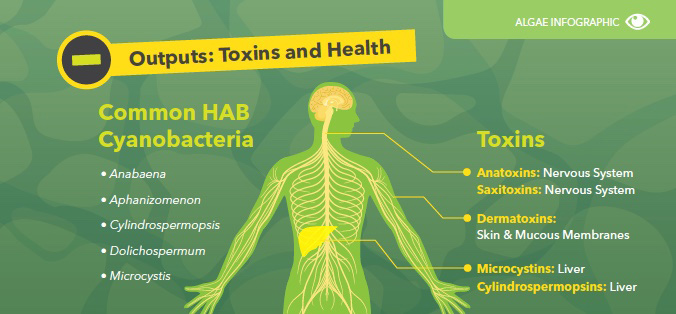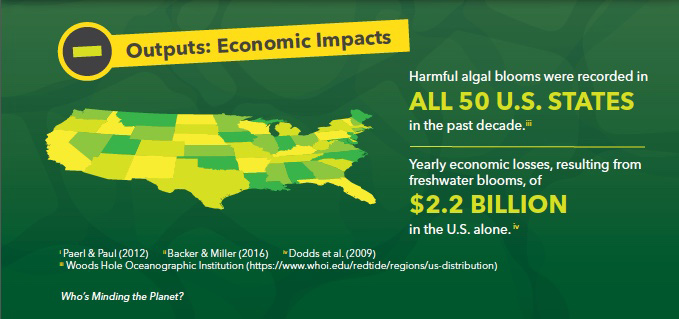Under the Microscope with Dr. Smith
B.S., Biology, Missouri State University, Springfield
M.S., Biology, Missouri State University, Springfield
Ph.D., Microbiology, The Ohio State University
Dr. Stephanie A. Smith is a Product Manager at YSI. She works with customers and a team of engineers to develop water monitoring technology for the scientific community. Her diverse experience in academia, contract research, and as an entrepreneur are all leveraged to bring the best new water monitoring technologies to the marketplace.
>> Download full copy of Mission: Water Magazine
>> Download Under the Microscope: Focus on Algae from Mission: Water Magazine
Question: What inspired you to work in the water field?
Dr. Smith: Around 10 years ago, I attended a few talks at the WEFTEC conference in Chicago. One in particular was about the water-energy nexus and it focused on how water and energy are inextricable industries and concepts.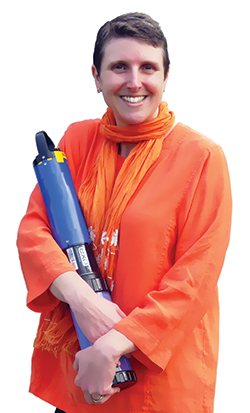
Sustainable energy, food shortages and world hunger are all global issues, but all of these things are tied to one limited resource, water.
That conference was a turning point for me and I decided that my career would always be about water. So a company like Xylem, with the motto "Let's Solve Water," certainly seemed like a great fit!
Question: Did you know microbiology was your calling from the beginning or did it find you?
Dr. Smith: It was quite accidental because as an undergraduate I worked more in wildlife biology and mammalogy. I continued those studies with my master's thesis project focusing on armadillos. Armadillos were beginning to migrate into Missouri, which we know now was an early sign of climate change.
We were investigating their digestive physiology to better understand feeding habits and the microbiology of the gut was a central component to the project. I’d never taken a microbiology class at that point, so my master's thesis work really led me there.
I realized I had a knack for microbiology and so did one of my advisors, who suggested that I go on for a Ph.D. Some of the best advice I ever got!
Question: Why do algae get a bad rap these days?
Dr. Smith: Because of toxic algae and harmful algal blooms.
Algal blooms such as red tides have always been with us, but they never occurred with the frequency and intensity we see today. The frequency and intensity of freshwater harmful algal blooms has never occurred the way we see it now, either. So, all algae get a bad rap, but, really, we're to blame for creating such an imbalance in the environment. (Read Harmful Algal Blooms | Everything You Need to Know).
Question: What are some of the negative impacts of freshwater algal blooms and what impact do they have on our communities?
Dr. Smith: People always talk about the toxins in freshwater environments, but modern drinking water treatment largely limits our exposures to these toxins. Much of the focus is on the toxins because the word itself inspires fear and helps to get press and eyes on the issue. However, my opinion is that other effects of freshwater algal blooms are not adequately being talked about.
Anoxia is the big one. With rapid blooms, there’s a significant level of algal growth and then that biomass dies off almost as fast as it sprung up. When those algae die, heterotrophic degradation of the dead algae consumes the oxygen that was dissolved in that water at a rate much faster than oxygen can dissolve naturally back into the water from the atmosphere.
So, you get an anoxic environment in short order, leading to fish kill and the noticeable odors that result from dead fish washing up on the shore.
Homes, hotels and restaurants located by lakes are also affected by the overwhelming stench of rotting algae (or fish), hurting the local real estate market, businesses, and tourism.
In addition to these economic impacts, the environmental impact of anoxia is significant, as we’ve observed with the hypoxic zone where the Mississippi River spills into the Gulf of Mexico. Restoring balance to these hypoxic or anoxic zones in our waterways is a great need, but it’s a hard one to explain to the public. The economic impacts I described are easier to communicate, and create the opportunity for us to address the environmental impacts at the same time.
Question: What about the effects on community drinking water supplies?
Dr. Smith: There are many! However, it's my belief that an inappropriate level of attention is placed on the impact of algal toxins on drinking water. In drinking water one impact that these blooms have, and which doesn't get its fair level of attention, is taste and odor compounds--like geosmin and MIB (2-methylisoborneol).
When there’s a large bloom in a drinking water reservoir, a properly managed, modern facility is going to remove all of the toxins and all of the algae, but often they get overwhelmed with those taste and odor compounds, and you can taste that at the faucet. It's an unpleasant musty taste in the water.
>> Download Under the Microscope: Focus on Algae from Mission: Water Magazine
These compounds are not health hazards, except in extremely high concentrations, but the water plant now has to either find an economically viable solution for removing the compounds, or deal with the onslaught of customer complaints. People don’t always appreciate that our public utility managers are really in the business of customer service. Taste and odor problems drive costs up for them, and prices for consumers.
Question: How do scientists track algal blooms? Can we predict them?
Dr. Smith: In the last few years, some technologies have developed that do allow us to predict them. NOAA has the best system for doing this right now. They're using satellites to monitor pigments they can visualize from the water’s surface. (Learn more, Toxic Algae Struggle Has NASA's Attention).
Chlorophyll and phycocyanin are both fluorescent pigments that are used by algae for photosynthesis and you can see these pigments with satellite technology. The challenge with that is it's only what you can see on the surface and only what's unobstructed by clouds, trees, or structures, so these data must be ground-truthed by instruments like multiparameter sondes.
Both sondes and satellite technologies are so sensitive that they can detect a bloom coming on before we can see it with the naked eye. Fluctuations in pigment concentrations are an indicator of fluctuations in the algal populations.
NOAA uses the pigment data with sophisticated computer models to forecast blooms. These models incorporate a holistic approach, measuring parameters such as rainfall, runoff events, and nutrient loads. They can get surrogate measurements of some of those parameters with sondes and other in situ measurements.
Question: Adoption of continuous nutrient monitoring has been slow due to the cost of these instruments. What can industry do to help?
Dr. Smith: That's a factor of how technology evolves. Leading-edge innovation comes at a high price.
When I was an undergraduate, you couldn't buy a computer and put it in your backpack to bring to school. It took many years before that technology could be miniaturized and put in a form that was portable and accessible to the wider public.
It's the same with nutrient monitoring technology related to HABs (Harmful Algae Blooms). Today there are deployable spectrophotometers and fluorometers that can be used to look at HAB-stimulating nutrients, but their price puts them out of reach for most organizations.
It’s inevitable that businesses like YSI will come up with a way to make these nutrient sensors more accessible to a wider community of scientists.
Question: Do you foresee the frequency and intensity of HABs increasing over the next decade in the U.S.?
Dr. Smith: Honestly, it depends on our political will to do anything about the causes. If we don't get serious about addressing the issues associated with climate change and introduction of nutrients like phosphorus and nitrogen into our waterways, blooms will continue to get worse. Algal blooms used to be a rare thing. Now, over 70% of surface waters in the U.S. have experienced an algae bloom.
Think about that for a moment. They used to be almost unheard of and now they even occur in moving bodies of water like rivers and streams.
There is a huge body of scientific evidence and publications connecting this issue to increasing global temperatures, changes in the seasonal cycles, and other effects of climate change. So, if we don't do something to try to stem that tide, this trend is not going to reverse itself.
Question: How can scientists work with the agricultural community to help address HABs?
Dr. Smith: I'm a little bit at odds with the scientific community on this topic. I can't argue against the reality that agricultural-based runoff of nutrients is clearly an issue driving algal blooms. But, I also grew up in a rural community, so I know that farmers, by their nature, are good stewards of the land. It's their livelihood, so to argue they are just irresponsibly over-fertilizing is not reasonable. Why would they waste their money like that, and why would they willingly hurt the waters that support their livestock and families?
The productivity that farmers need per acre today is about 20-fold of what it was 100 years ago. How are they going to keep up? How are they going do that if they can't fertilize? Soon enough there will be nine billion people on this planet. How are we going to feed them?
Pointing the finger at the farm community and agriculture is a very myopic view of the HAB issue. We have an ever-growing population and fewer and fewer resources to feed that population. So, it's a much bigger issue than regulating runoff. I've never met a farmer that wouldn't comply with those kinds of regulations. They're willing to do it, but we've got to provide them with sustainable tools for doing that. They've still got to meet certain productivity targets to feed us all.
